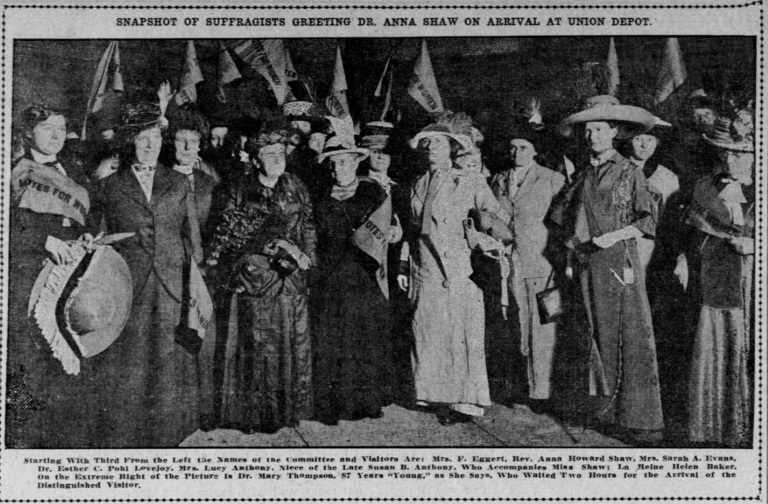VOTES FOR WOMEN
- Program
- Subject
- Location
- Lat/Long
- Grant Recipient
-
National Votes for Women Trail
-
Event
- 1195 SW Court Ave, Pendleton, OR 97801, USA
- 45.669389, -118.798745
-
National Collaborative for Women's History Sites
VOTES FOR WOMEN
Inscription
VOTES FOR WOMENSPEAKING TO ROUND-UP CROWDS
FROM AUTOMOBILES, NATIONAL
SUFFRAGISTS RALLIED SUPPORT
FOR WOMEN’S RIGHT TO VOTE
IN 1912 AND 1916.
WILLIAM G. POMEROY FOUNDATION 2022
In 1912, national suffrage leaders spoke at the Pendleton Round-Up, a rodeo held in Pendleton, Oregon, in support of the proposed equal suffrage amendment to the state constitution that would enfranchise Oregon women. This included a visit from Dr. Anna Howard Shaw in September of that year. Shaw was then president of the National American Woman Suffrage Assocation and was in Oregon to rally public support for women’s right to vote and convince voters to pass the proposed equal suffrage amendment in the coming election. Shaw stopped in Pendleton before continuing west to Portland. In the September 29, 1912 edition of the Sunday Oregonian, Shaw referred to the Pendleton Round-Up as a “superb” show and gave a brief account of her suffrage talks given to the Round-Up crowd:
When I got there they told us it was not a bit of use trying to speak to a crowd on such an occasion, but I did speak, and what is more we had a magnificent audience, packed to overflowing. Then I gave little ten-minute talks on the grounds, and the reception they gave us was splendid. If it is anything like that in the rest of the state suffrage will carry the day.
Shaw’s prediction proved true, when on November 5, 1912, Oregon voters passed the equal suffrage amendment. The suffrage victory in Oregon helped to influence the women’s suffrage movement nationally. By 1916, national suffragists were once again speaking to crowds at the Pendleton Round-Up. This time around, suffragists were representing the National Woman’s Party, and were campaigning for a federal women’s suffrage amendment to the United State Constitution that would extend the vote to women all across the country.
On June 4, 1919, the United States Congress passed the Nineteenth Amendment which states that the right to vote cannot be denied on account of sex. The Nineteenth Amendment then went to the states for ratification. In January 1920, Oregon ratified the amendment and by August, the necessary 36 states had ratified it, finally securing women’s right to in the United States.

